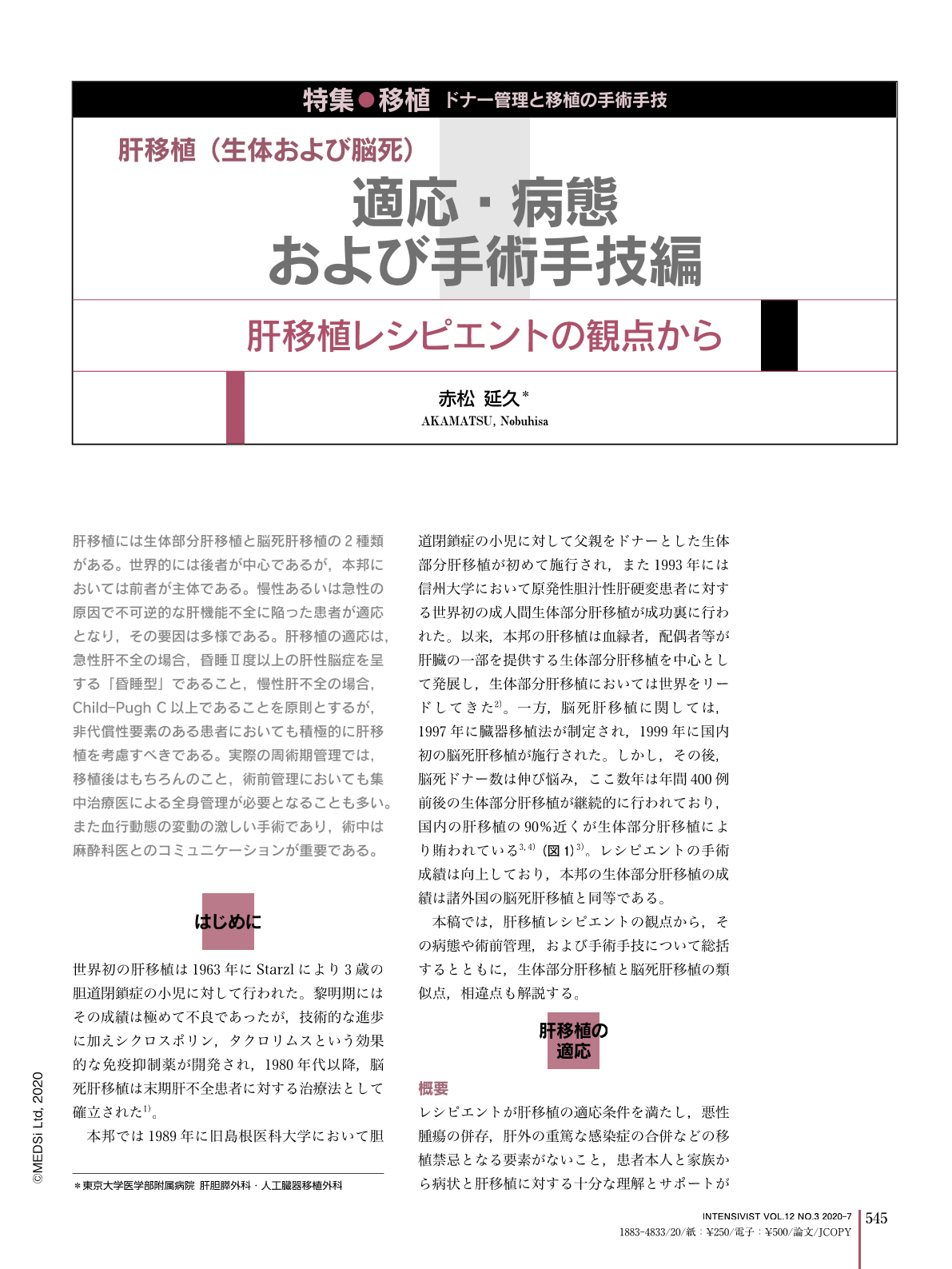Japanese
English
- 有料閲覧
- Abstract 文献概要
- 1ページ目 Look Inside
- 参考文献 Reference
肝移植には生体部分肝移植と脳死肝移植の2種類がある。世界的には後者が中心であるが,本邦においては前者が主体である。慢性あるいは急性の原因で不可逆的な肝機能不全に陥った患者が適応となり,その要因は多様である。肝移植の適応は,急性肝不全の場合,昏睡Ⅱ度以上の肝性脳症を呈する「昏睡型」であること,慢性肝不全の場合,Child-Pugh C以上であることを原則とするが,非代償性要素のある患者においても積極的に肝移植を考慮すべきである。実際の周術期管理では,移植後はもちろんのこと,術前管理においても集中治療医による全身管理が必要となることも多い。また血行動態の変動の激しい手術であり,術中は麻酔科医とのコミュニケーションが重要である。
Liver transplantation is the final treatment for both acute and chronic liver failure. In Japan, living donor liver transplantation has been established as a standard procedure during the last three decades, while whole liver transplantation from deceased donors is the world standard. Perioperative management of liver transplant recipients requires intensive care during both the pre- and post-operative periods. Patients often require mechanical ventilation and renal replacement therapy. The liver transplantation procedure includes explant of the native liver, implantation of the graft with vascular reconstruction, and reperfusion of the new liver, during which time the hemodynamics change drastically. Anesthesiologists need to prepare for massive bleeding and sudden collapse of the cardiopulmonary circulation, during the explant, anhepatic phase, and just after reperfusion. In living donor liver transplantation, recipients often suffer from small-for-size graft syndrome, which is prolonged graft dysfunction and massive ascites, requiring intensive and meticulous post-transplant care.

Copyright © 2020, MEDICAL SCIENCES INTERNATIONAL, LTD. All rights reserved.


